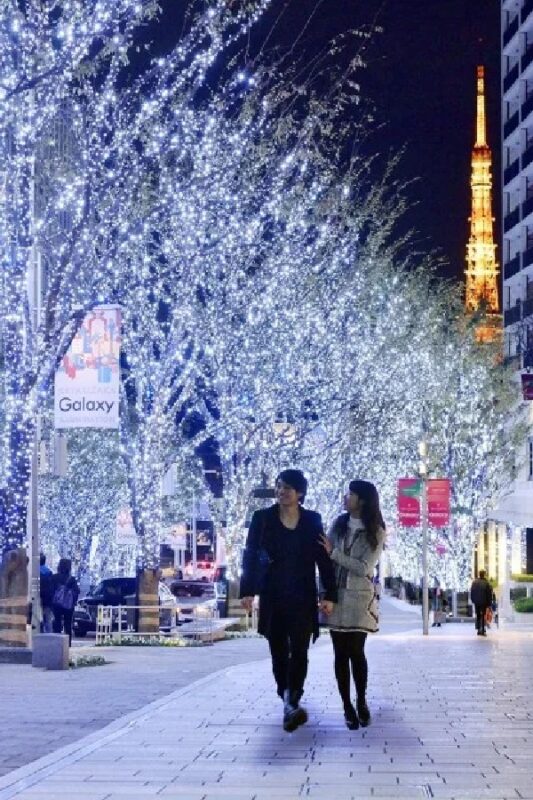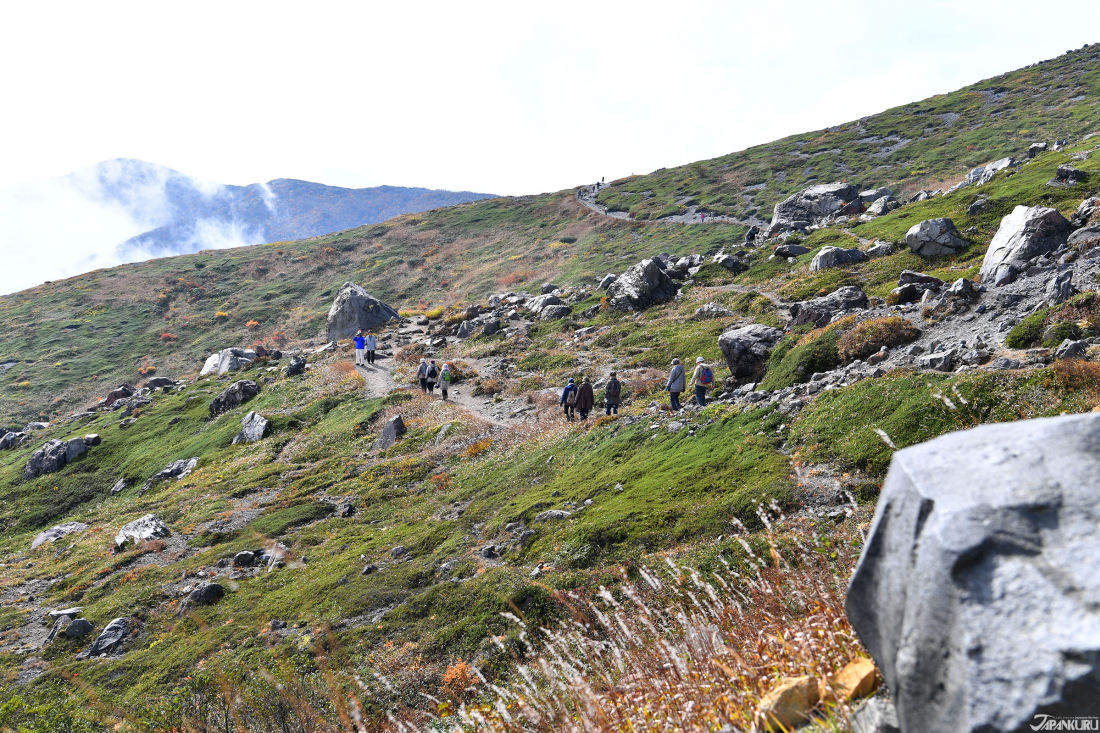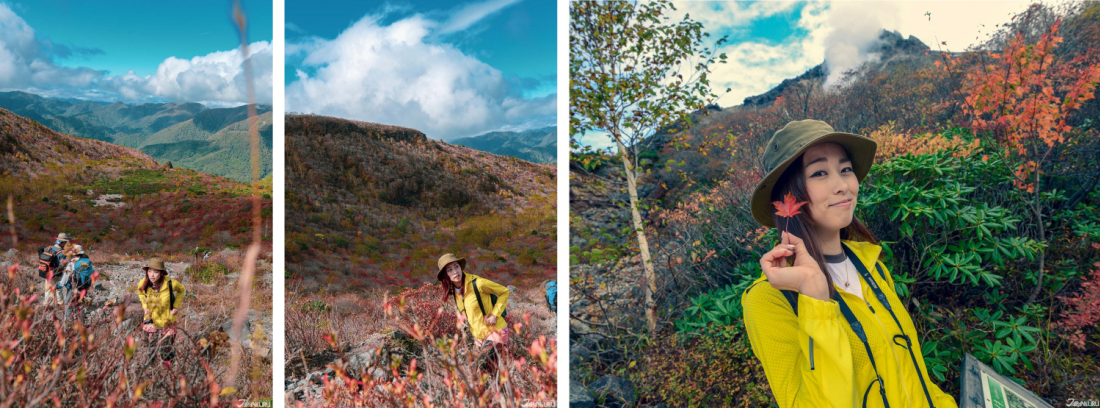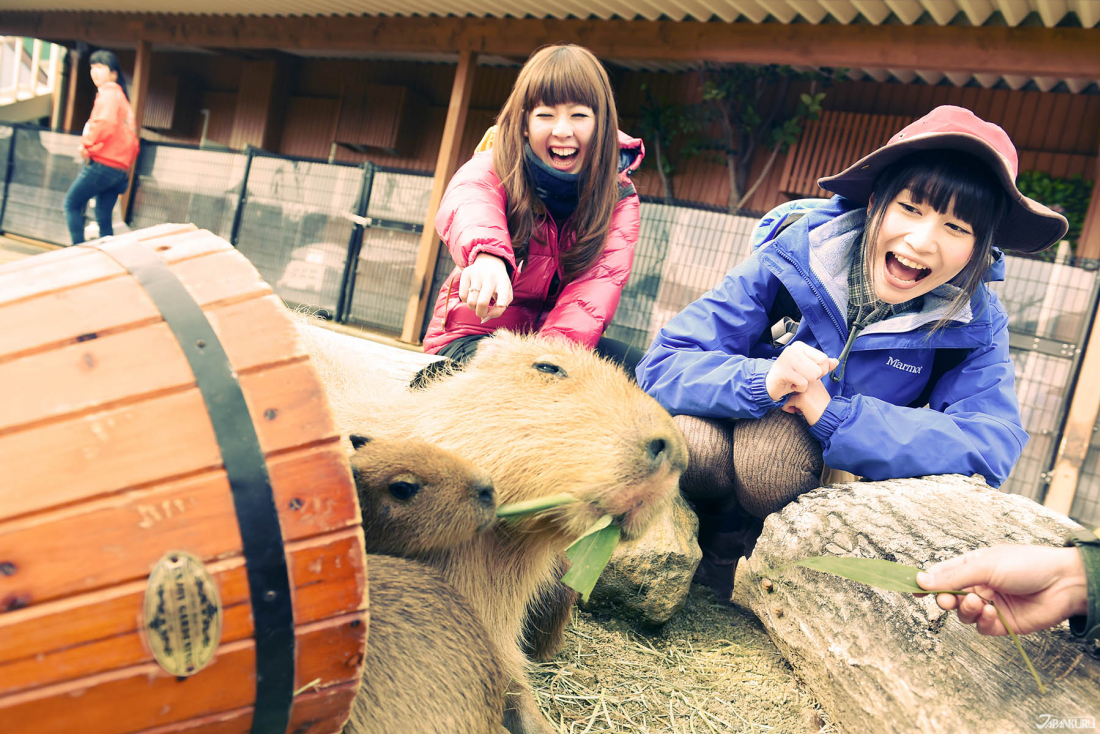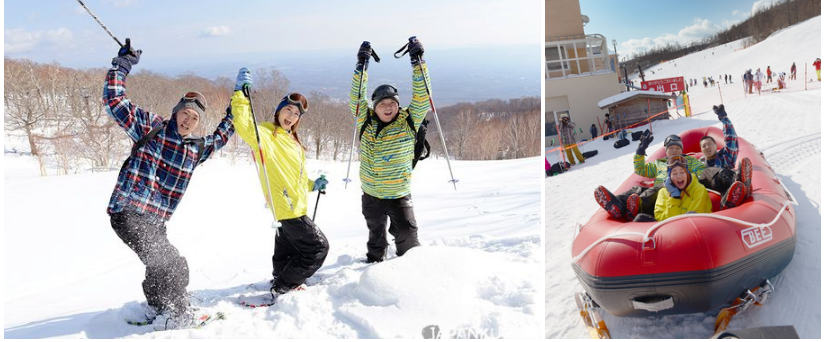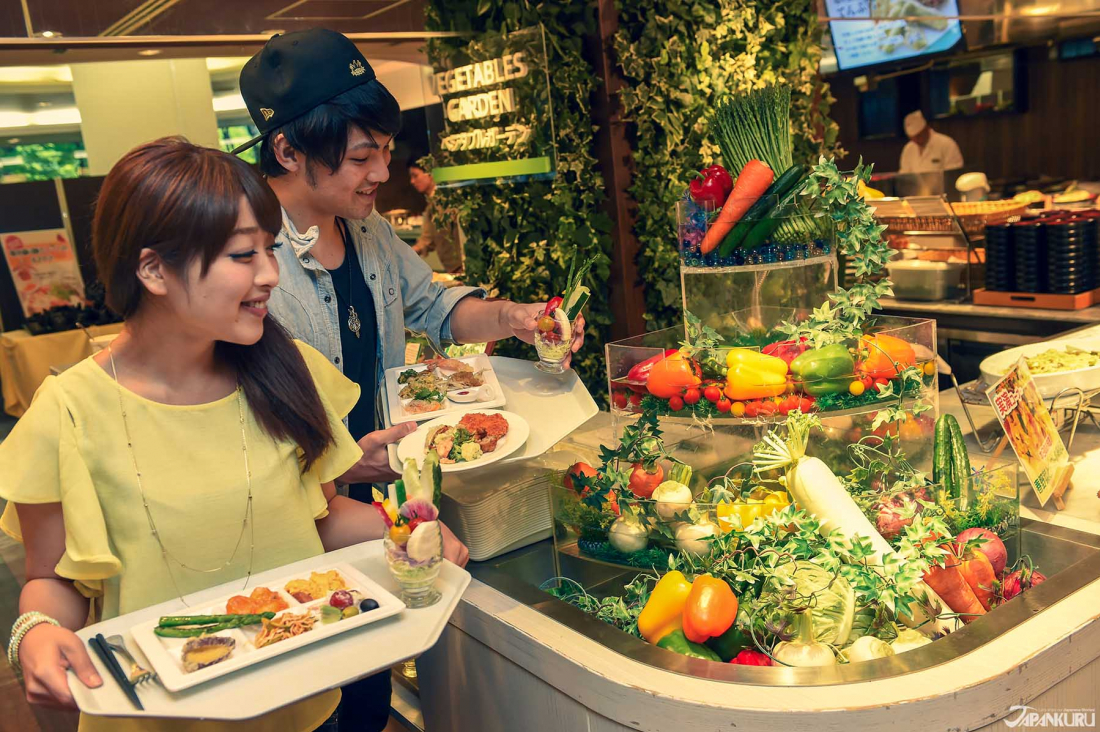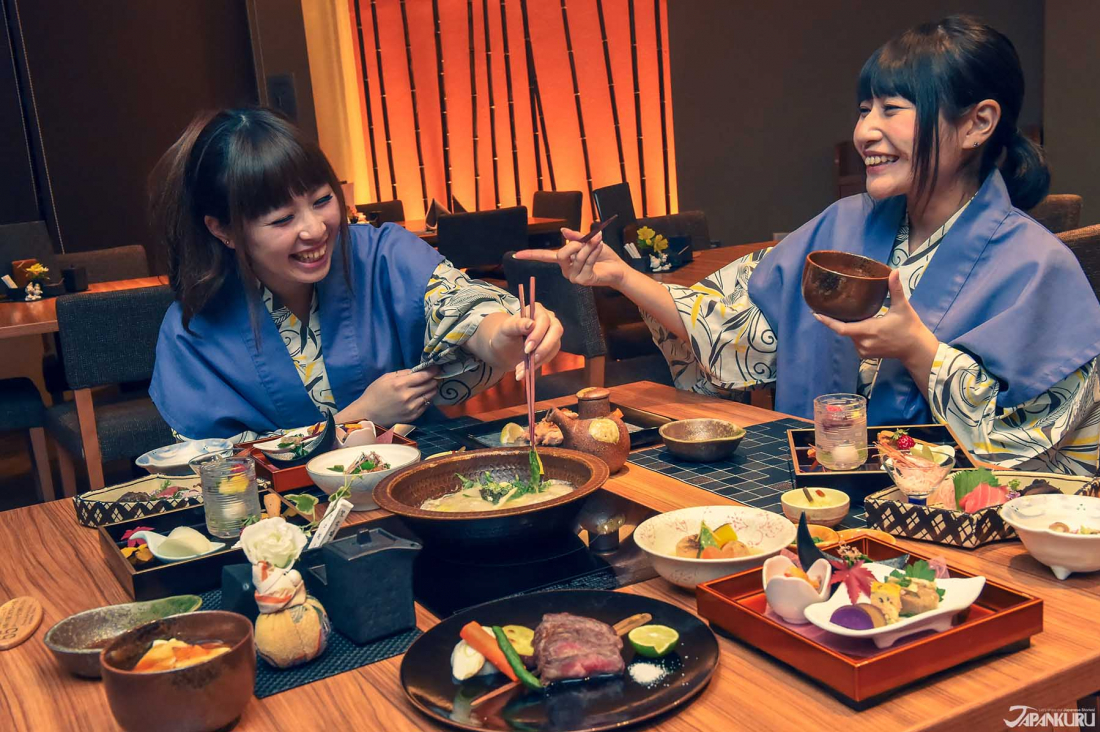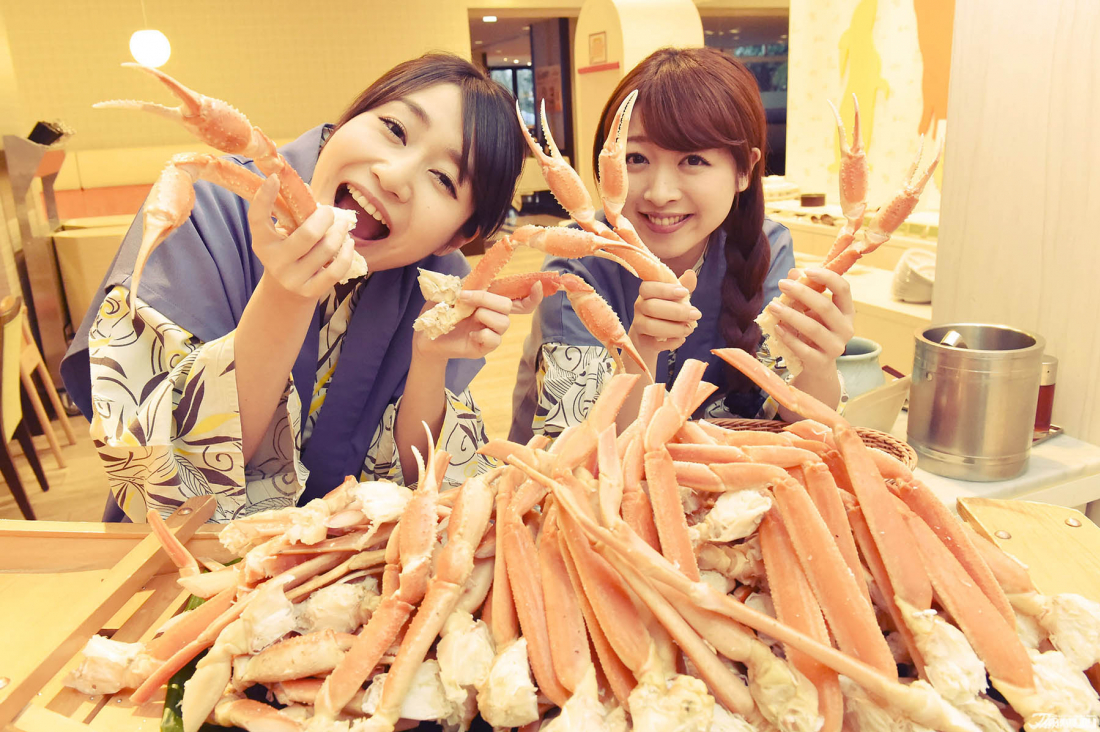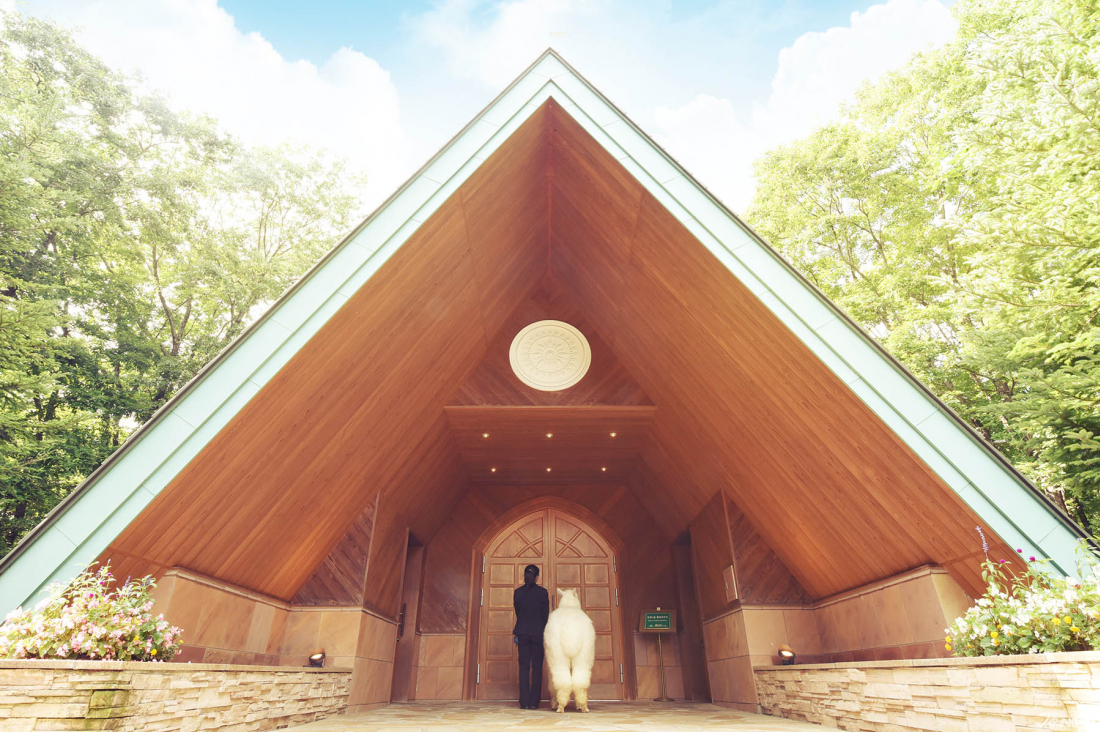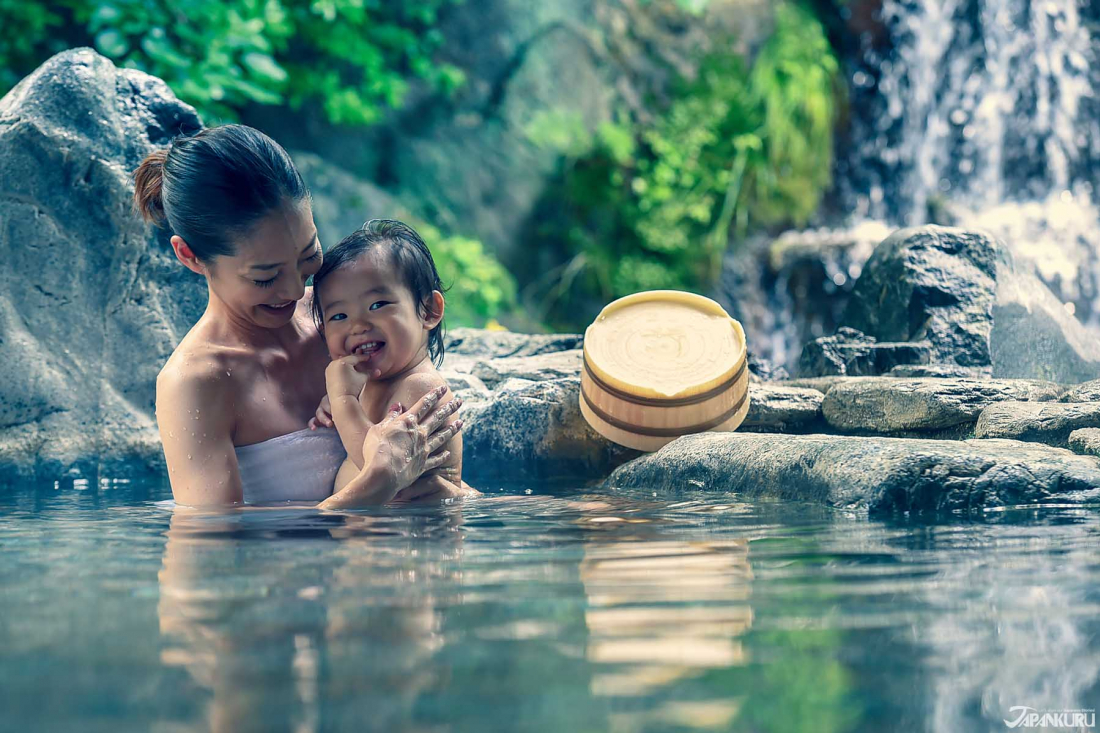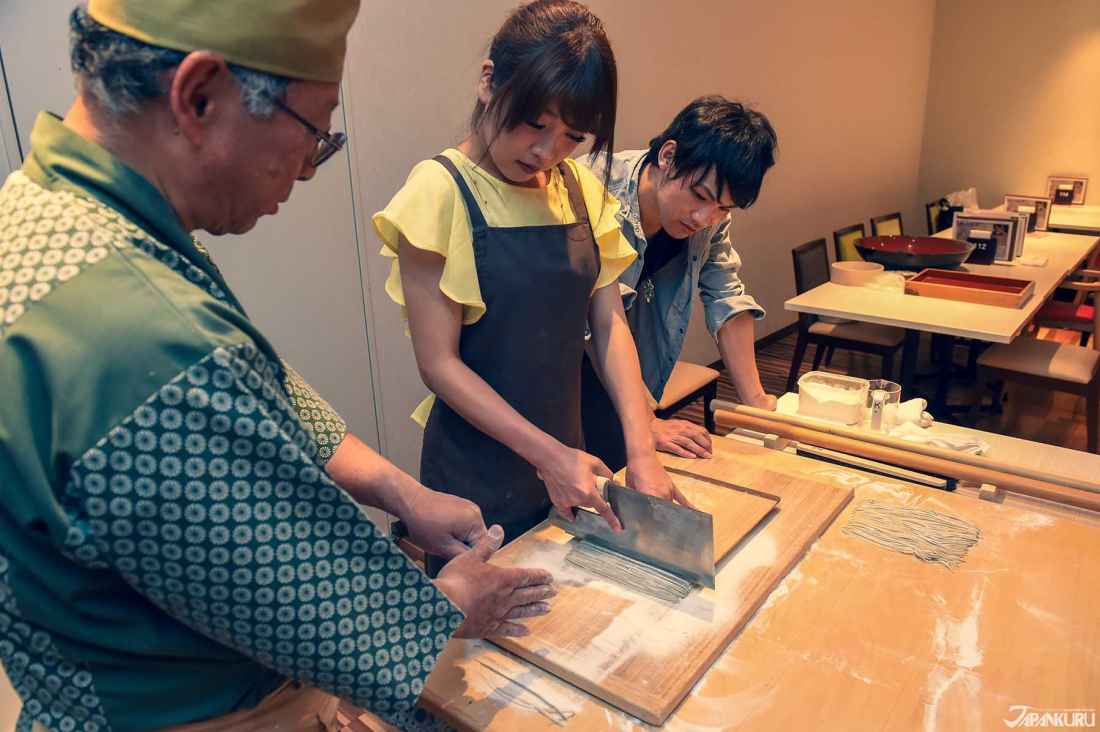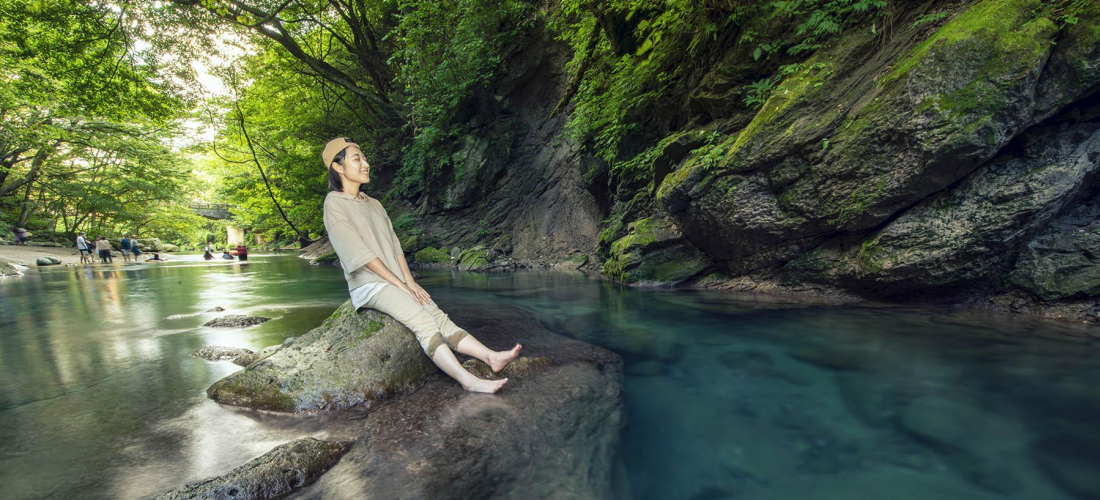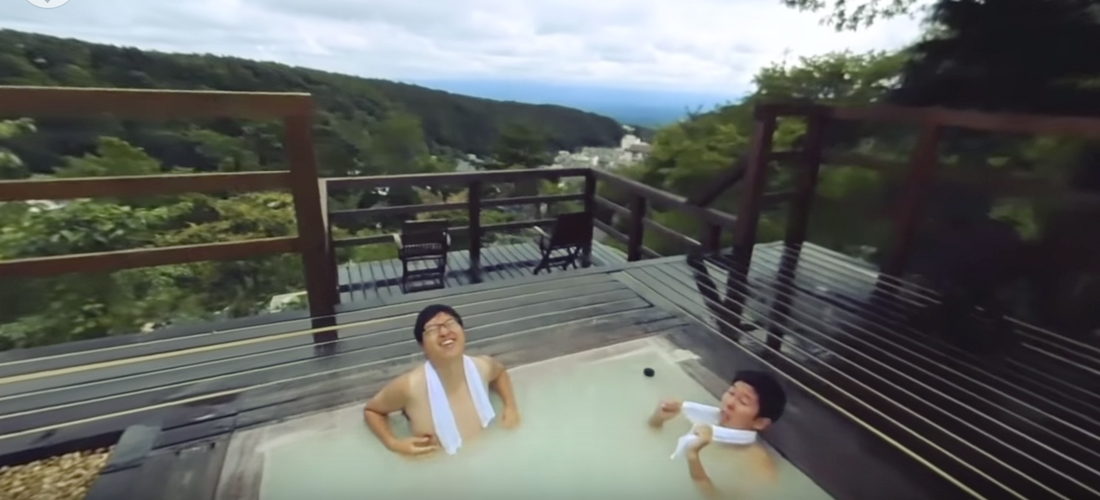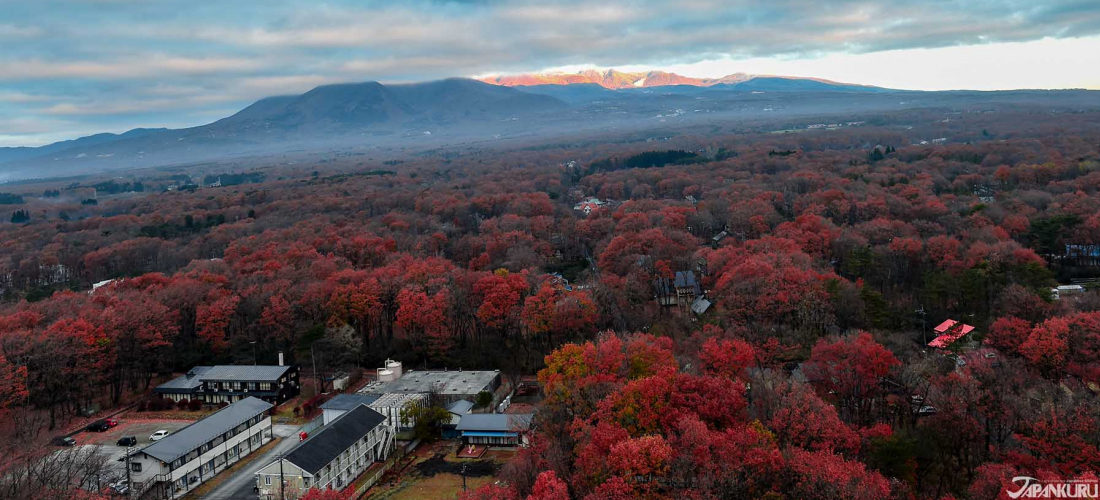
CONTENTS
North of Tokyo, on the edge of Tochigi Prefecture, you’ll find the town of Nasu, full of gorgeous natural scenery and extensive resort facilities. The area is so relaxing that it’s become a favorite of Japan’s recent emperors, and current imperial family members visit Nasu regularly. With such a royal recommendation, you might already be planning your next trip, but there’s plenty to be said for Nasu even without mentioning the region’s eminent guests. So let the Japankuru team walk you through the seasonal charms of Nasu, and why we highly recommend a stay at Hotel Epinard Nasu.
Why Visit the Nasu Highlands?
The Nasu Highlands (Nasu Kogen, 那須高原)
& Hotel Epinard Nasu
Scattered across the slopes of the volcanoes that make up Mount Nasu (那須岳), the Nasu Highlands area is known for picturesque natural scenery and luxurious hot springs, or onsen (温泉) as they're called in Japanese. That's undoubtedly why the Nasu Imperial Villa was built in the highlands in 1926, and the imperial family continues to visit regularly to this day.
While travelers can't stay the night in the Nasu Imperial Villa, just a few kilometers away there's the perfect replacement. Hotel Epinard Nasu seems a little like its own imperial retreat, and if you stay the night you and your family might just feel like royalty as well. You can always visit the Imperial Villa's gardens if you want, but the facilities at the hotel sure won't leave you wanting.
Easy Access!
Nasu has been a popular destination for a long time, but until recently many visitors have rented cars (or taken their own vehicles) to get there. Although Hotel Epinard Nasu isn't very far from the big city of Tokyo, it's tucked away in the natural enclave of the Nasu Highlands, making it a little removed from busy train and bus routes. Rental cars are still a pretty convenient way to give yourself a little freedom in the area.
Image Source: Official Website
However! The hotel now runs a direct shuttle bus from Tokyo Station and Ikebukuro Station, two of the most convenient stations in the capital city. That means that it's easier than ever to get there, and explore some of Japan's most scenic natural landscapes.
Access Options:
① Direct shuttle bus from Tokyo Station or Ikebukuro Station.
(Just make your reservation when you book your room!)
or
② Take the train to Nasu Shiobara Station, then find the Hotel Epinard Nasu shuttle bus or hop in a taxi.
(It's about 30 min. from Nasu Shiobara Station to the hotel.)
Seasonal Charms
In Japan, Autumn Means a Trip to Nasu!
And it's not hard to see why. Every fall, the heavily forested Nasu Highlands turn a fiery red, making it an ideal spot to participate in Japanese "koyo" (紅葉, or autumn foliage viewing).
Hiking
With such photogenic hills and valleys spread across the Nasu area, hiking is an obvious thrill. Clamber through the brush and admire the mountainsides that rise up around you, covered in Nasu's autumn foliage.
The variety of plants make for a colorful collage of greens, oranges, and reds that paint the scenery like an impressionist masterpiece.
The Nasu Ropeway
If you'd like to admire the view, but aren't quite up to a full day of hiking, there's always the Nasu Ropeway! Make your way into the hills inside a cable car, and watch the terrain open up beneath you. Since the ropeway is an easier trip than a strenuous hike, it's perfect for family travel with older and younger family members alike.
Nasu Ropeway (那須ロープウェイ)
215 Mt. Nasudake, Ooaza Yumoto, Nasu-machi, Nasu-gun, Tochigi
Open: March ~ November
Official Website (jp)
Hot Springs
Known as an onsen resort, Nasu is full of steaming baths filled with natural hot spring water. Some of them are as old as 1,300 years, with water famed for its high quality.
The Killing Stone (殺生石, Sessho-seki)
It should be safe to visit now, but it's said that once upon a time the village surrounding this area was haunted by the spirit of a nine-tailed fox. This mischevious fox was turned into a boulder by a Buddhist priest who came and performed a series of rituals to save the village, but they say that this rock, the"Killing Stone" or Sessho-seki, will still kill you if you touch it.
If you're a little less inclined to believe in local legend, you might be convinced that the Killing Stone is just one of the many rocks that have found their way to this small valley. We still wouldn't touch it, though!
Of course, the area around the stone transforms in fall, just like the rest of Nasu. The once green surroundings explode into autumn color.
The Killing Stone (Sessho-seki, 殺生石)
182 Yumoto, Nasu-machi, Nasu, Tochigi
Nasu Animal Kingdom
Nasu isn't known for its local wildlife, but when it comes to animals from all over the world, they've got 'em! Nasu is home to multiple zoo-like facilities, with Nasu Animal Kingdom being particularly well-known for animal performances. Of course, you can spend all your time with the capybaras instead, if you want.
Nasu Animal Kingdom (那須どうぶつ王国)
1042-1 Oshima, Nasu, Nasu District, Tochigi
Weekdays 10:00 – 16:30/Weekends 9:00 – 17:00 (Winter: ~16:00)
Official Website (en)
When Winter Comes, It’s Time to Ski!
When snow starts to fall on Nasu's reddish-brown treetops, that means it's time to break out those skis (or snowboards, or tubes)! Tochigi isn't necessarily famous for its snow, but you'll find some excellent ski runs right by Hotel Epinard Nasu.
The Benefits of Staying at Hotel Epinard Nasu
Reason ① Family-Friendly Facilities
Hotel Epinard Nasu has an entire floor entirely devoted to family rooms, made specifically to cater to families with kids of all ages. Not only are the rooms and hallways decorated with a little extra flair, but furniture is made to be accessible to younger children, there's nowhere to fall down from and nothing pointy to fall onto, plus – there are toys!
Hotel Epinard Nasu also does everything they can to make mealtime a nice time for everyone, and avoid stress. The family floor includes a buffet restaurant set up so that even young children can have a little independent fun, and make their own plate (with maybe just a little parental guidance)! Other days of the week, adult family members can head to a relaxing evening at one of the hotel's normal restaurants and bars, without worrying about boring the kids. Little ones love the chance to play with babysitters and check out toys of all kinds in the Piyo Piyo Room.
Reason ② Delicious Food and Great Date Spots
Whether you want to sample the rich variety of local produce…
… or indulge in a meal that's a little more deluxe, you're bound to find something you'll like at one of Hotel Epinard Nasu's seven different restaurants, cafes, and lounges. They've got French cuisine and traditional Japanese fare, fresh-baked bread and desserts made with local Nasu dairy topped with Tochigi's famous strawberries. (Try the soft-serve ice cream if you see it, it's a Nasu specialty.) There's even a karaoke bar and a luxe buffet with a little of everything.
When you want dinner with a view, this is clearly the place to be.
And with options like this, nobody has any reason to get crabby.
Reason ③ Alpacas!!
Hotel Epinard Nasu's team of alpacas are most often seen at the hotel's weddings, when they can be hired to participate in the festivities. That's right, if you get married at Hotel Epinard Nasu, you too can have an alpaca attend your wedding!
Even if you're not getting married with the Nasu alpacas in attendance, you might just be able to meet one. When the alpacas finish up with the majority of their work, which comes in the spring and summer, Nasu Animal Kingdom sets up special limited-time events where guests can meet an alpaca right in front of the hotel! Check before you arrive – there might just be an alpaca waiting to greet you!
Reason ④ Onsen, and Other Resort Luxuries
Hotel Epinard Nasu houses the largest open-air hot spring bath in the area, alongside jacuzzis, saunas, swimming pools, and big inside baths made fragrant with Japanese cypress wood. The hotel onsen draw their water from nearby sources, just like the famous local hot springs that date back hundreds of years.
After melting away the fatigue of travel in the onsen, you can move on to one of a variety of massages (there are literally three different spas on-site!), or instead take a nap on your spacious hotel bed.
Reason ⑤ Activities and Workshops
Last but not least, Hotel Epinard Nasu offers a huge variety of workshops and cultural experiences. Try your hand at making soba noodles, then taste them to sample your own handiwork!
Take a pottery class, or make some matching accessories for yourself and a friend. There are even workshops where you can learn to create tiny glass figurines – and put them in a snowglobe if you want!
Hotel Epinard Nasu
As the weather cools, the surroundings only get more beautiful.
While the imperial family often visits Nasu in late summer, we highly recommend a trip over as the season changes from fall to winter. It's hard to beat the hillsides covered in colorful foliage, but winter snow adds an element of lacy white elegance to the landscape, making for a beautiful view as you wake up in your cozy bed or soak in Hotel Epinard Nasu's hot spring baths.
Have you been to Nasu, or are you thinking about staying over at Hotel Epinard Nasu after reading this? Let us know all about your experience, and share some of your pictures with us on twitter, instagram, and facebook!
Details
NAME:Hotel Epinard Nasu
MAP
ACCESS:Nasu Shiobara Station
CONTACT TEL:0287-78-6000
COMMENT
FEATURED MEDIA
VIEW MORE 
A New Tokyo Animal Destination: Relax & Learn About the World’s Animals in Japan
#pr #japankuru #anitouch #anitouchtokyodome #capybara #capybaracafe #animalcafe #tokyotrip #japantrip #카피바라 #애니터치 #아이와가볼만한곳 #도쿄여행 #가족여행 #東京旅遊 #東京親子景點 #日本動物互動體驗 #水豚泡澡 #東京巨蛋城 #เที่ยวญี่ปุ่น2025 #ที่เที่ยวครอบครัว #สวนสัตว์ในร่ม #TokyoDomeCity #anitouchtokyodome

Shohei Ohtani Collab Developed Products & Other Japanese Drugstore Recommendations From Kowa
#pr #japankuru
#kowa #syncronkowa #japanshopping #preworkout #postworkout #tokyoshopping #japantrip #일본쇼핑 #일본이온음료 #오타니 #오타니쇼헤이 #코와 #興和 #日本必買 #日本旅遊 #運動補充能量 #運動飲品 #ช้อปปิ้งญี่ปุ่น #เครื่องดื่มออกกำลังกาย #นักกีฬา #ผลิตภัณฑ์ญี่ปุ่น #อาหารเสริมญี่ปุ่น

도쿄 근교 당일치기 여행 추천! 작은 에도라 불리는 ‘가와고에’
세이부 ‘가와고에 패스(디지털)’ 하나면 편리하게 이동 + 가성비까지 완벽하게! 필름카메라 감성 가득한 레트로 거리 길거리 먹방부터 귀여움 끝판왕 핫플&포토 스폿까지 총집합!
Looking for day trips from Tokyo? Try Kawagoe, AKA Little Edo!
Use the SEIBU KAWAGOE PASS (Digital) for easy, affordable transportation!
Check out the historic streets of Kawagoe for some great street food and plenty of picturesque retro photo ops.
#pr #japankuru #도쿄근교여행 #가와고에 #가와고에패스 #세이부패스 #기모노체험 #가와고에여행 #도쿄여행코스 #도쿄근교당일치기 #세이부가와고에패스
#tokyotrip #kawagoe #tokyodaytrip #seibukawagoepass #kimono #japantrip

Hirakata Park, Osaka: Enjoy the Classic Japanese Theme Park Experience!
#pr #japankuru #hirakatapark #amusementpark #japantrip #osakatrip #familytrip #rollercoaster #retrôvibes #枚方公園 #大阪旅遊 #關西私房景點 #日本親子旅行 #日本遊樂園 #木造雲霄飛車 #히라카타파크 #สวนสนุกฮิราคาตะพาร์ค

🍵Love Matcha? Upgrade Your Matcha Experience With Tsujiri!
・160년 전통 일본 말차 브랜드 츠지리에서 말차 덕후들이 픽한 인기템만 골라봤어요
・抹茶控的天堂!甜點、餅乾、飲品一次滿足,連伴手禮都幫你列好清單了
・ส่องมัทฉะสุดฮิต พร้อมพาเที่ยวร้านดังในอุจิ เกียวโต
#pr #japankuru #matcha #matchalover #uji #kyoto #japantrip #ujimatcha #matchalatte #matchasweets #tsujiri #말차 #말차덕후 #츠지리 #교토여행 #말차라떼 #辻利抹茶 #抹茶控 #日本抹茶 #宇治 #宇治抹茶 #日本伴手禮 #抹茶拿鐵 #抹茶甜點 #มัทฉะ #ของฝากญี่ปุ่น #ชาเขียวญี่ปุ่น #ซึจิริ #เกียวโต

・What Is Nenaito? And How Does This Sleep Care Supplement Work?
・你的睡眠保健品——認識「睡眠茶氨酸錠」
・수면 케어 서플리먼트 ‘네나이토’란?
・ผลิตภัณฑ์เสริมอาหารดูแลการนอน “Nenaito(ネナイト)” คืออะไร?
#pr #japankuru #sleepcare #japanshopping #nenaito #sleepsupplement #asahi #睡眠茶氨酸錠 #睡眠保健 #朝日 #l茶胺酸 #日本藥妝 #日本必買 #일본쇼핑 #수면 #건강하자 #네나이토 #일본영양제 #อาหารเสริมญี่ปุ่น #ช้อปปิ้งญี่ปุ่น #ร้านขายยาญี่ปุ่น #ดูแลตัวเองก่อนนอน #อาซาฮิ

Japanese Drugstore Must-Buys! Essential Items from Hisamitsu® Pharmaceutical
#PR #japankuru #hisamitsu #salonpas #feitas #hisamitsupharmaceutical #japanshopping #tokyoshopping #traveltips #japanhaul #japantrip #japantravel

Whether you grew up with Dragon Ball or you just fell in love with Dragon Ball DAIMA, you'll like the newest JINS collab. Shop this limited-edition Dragon Ball accessory collection to find some of the best Dragon Ball merchandise in Japan!
>> Find out more at Japankuru.com! (link in bio)
#japankuru #dragonball #dragonballdaima #animecollab #japanshopping #jins #japaneseglasses #japantravel #animemerch #pr

This month, Japankuru teamed up with @official_korekoko to invite three influencers (originally from Thailand, China, and Taiwan) on a trip to Yokohama. Check out the article (in Chinese) on Japankuru.com for all of their travel tips and photography hints - and look forward to more cool collaborations coming soon!
【橫濱夜散策 x 教你怎麼拍出網美照 📸✨】
每次來日本玩,是不是都會先找旅日網紅的推薦清單?
這次,我們邀請擁有日本豐富旅遊經驗的🇹🇭泰國、🇨🇳中國、🇹🇼台灣網紅,帶你走進夜晚的橫濱!從玩樂路線到拍照技巧,教你怎麼拍出最美的夜景照。那些熟悉的景點,換個視角說不定會有新發現~快跟他們一起出發吧!
#japankuru #橫濱紅磚倉庫 #汽車道 #中華街 #yokohama #japankuru #橫濱紅磚倉庫 #汽車道 #中華街 #yokohama #yokohamaredbrickwarehouse #yokohamachinatown

If you’re a fan of Vivienne Westwood's Japanese designs, and you’re looking forward to shopping in Harajuku this summer, we’ve got important news for you. Vivienne Westwood RED LABEL Laforet Harajuku is now closed for renovations - but the grand reopening is scheduled for July!
>> Find out more at Japankuru.com! (link in bio)
#japankuru #viviennewestwood #harajuku #omotesando #viviennewestwoodredlabel #viviennewestwoodjapan #비비안웨스트우드 #오모테산도 #하라주쿠 #日本購物 #薇薇安魏斯伍德 #日本時尚 #原宿 #表參道 #japantrip #japanshopping #pr

Ready to see TeamLab in Kyoto!? At TeamLab Biovortex Kyoto, the collective is taking their acclaimed immersive art and bringing it to Japan's ancient capital. We can't wait to see it for ourselves this autumn!
>> Find out more at Japankuru.com! (link in bio)
#japankuru #teamlab #teamlabbiovortex #kyoto #kyototrip #japantravel #artnews
Photos courtesy of teamLab, Exhibition view of teamLab Biovortex Kyoto, 2025, Kyoto ® teamLab, courtesy Pace Gallery

Japanese Makeup Shopping • A Trip to Kamakura & Enoshima With Canmake’s Cool-Toned Summer Makeup
#pr #canmake #enoshima #enoden #에노시마 #캔메이크 #japanesemakeup #japanesecosmetics

⚔️The Robot Restaurant is gone, but the Samurai Restaurant is here to take its place. Check it out, and don't forget your coupon!
🍣신주쿠의 명소 로봇 레스토랑이 사무라이 레스토랑으로 부활! 절찬 쿠폰 발급중
💃18歲以上才能入場的歌舞秀,和你想的不一樣!拿好優惠券去看看~
#tokyo #shinjuku #samurairestaurant #robotrestaurant #tokyotrip #도쿄여행 #신주쿠 #사무라이레스토랑 #이색체험 #할인이벤트 #歌舞伎町 #東京景點 #武士餐廳 #日本表演 #日本文化體驗 #japankuru #japantrip #japantravel #japanlovers #japan_of_insta

Japanese appliance & electronics shopping with our KOJIMA x BicCamera coupon!
用JAPANKURU的KOJIMA x BicCamera優惠券買這些正好❤️
코지마 x 빅 카메라 쿠폰으로 일본 가전 제품 쇼핑하기
#pr #japankuru #japanshopping #kojima #biccamera #japaneseskincare #yaman #dji #osmopocket3 #skincaredevice #日本購物 #美容儀 #相機 #雅萌 #日本家電 #일본여행 #면세 #여행꿀팁 #일본쇼핑리스트 #쿠폰 #일본쇼핑 #일본브랜드 #할인 #코지마 #빅카메라 #japankurucoupon
MAP OF JAPAN
SEARCH BY REGION

LATEST
VIEW MOREEVENT CALENDAR
VIEW MORE
